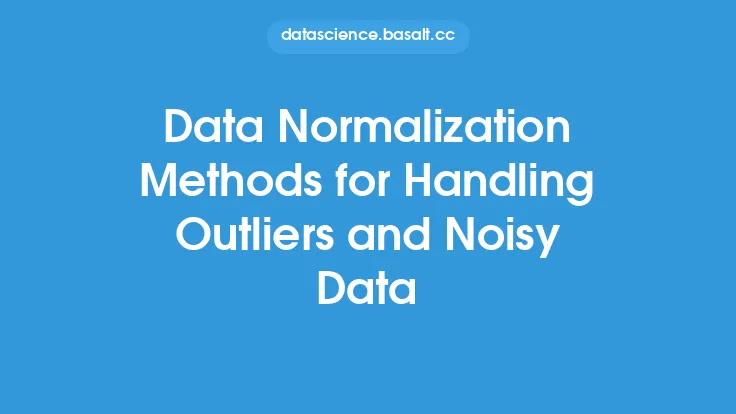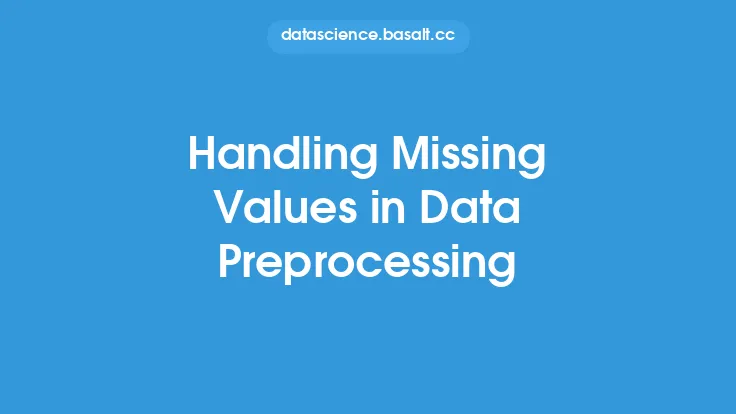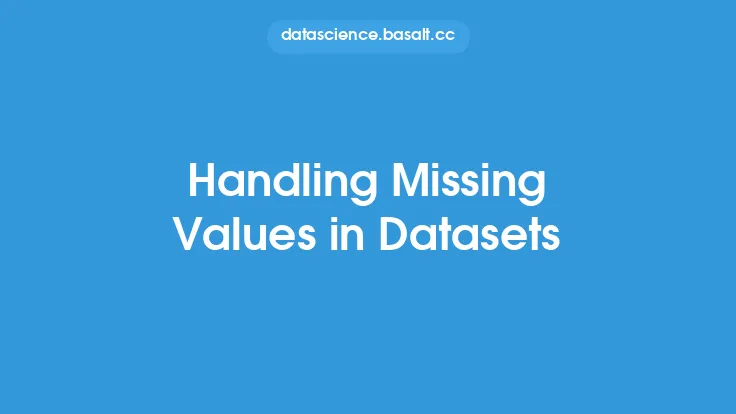Handling missing data is a crucial step in the data exploration process. Missing data can occur due to various reasons such as non-response, data entry errors, or equipment failures. If not handled properly, missing data can lead to biased results, incorrect conclusions, and poor decision-making. In this article, we will discuss the effective methods for handling missing data in exploration, including the types of missing data, methods for detecting missing data, and techniques for imputing missing values.
Types of Missing Data
There are three types of missing data: Missing Completely at Random (MCAR), Missing at Random (MAR), and Missing Not at Random (MNAR). MCAR occurs when the missing data is independent of the observed data and the missing data mechanism. MAR occurs when the missing data is dependent on the observed data, but not on the missing data mechanism. MNAR occurs when the missing data is dependent on the missing data mechanism. Understanding the type of missing data is essential in choosing the appropriate method for handling missing data.
Methods for Detecting Missing Data
Detecting missing data is the first step in handling missing data. There are several methods for detecting missing data, including summary statistics, data visualization, and statistical tests. Summary statistics such as mean, median, and standard deviation can help identify missing data. Data visualization techniques such as histograms, box plots, and scatter plots can also help identify missing data. Statistical tests such as Little's test and the MCAR test can help determine the type of missing data.
Techniques for Imputing Missing Values
There are several techniques for imputing missing values, including mean imputation, median imputation, regression imputation, and multiple imputation. Mean imputation involves replacing missing values with the mean of the observed values. Median imputation involves replacing missing values with the median of the observed values. Regression imputation involves using a regression model to predict the missing values. Multiple imputation involves creating multiple versions of the dataset with different imputed values and analyzing each version separately.
Single Imputation Methods
Single imputation methods involve imputing missing values with a single value. These methods include mean imputation, median imputation, and regression imputation. Mean imputation is a simple method that involves replacing missing values with the mean of the observed values. Median imputation is similar to mean imputation, but it involves replacing missing values with the median of the observed values. Regression imputation involves using a regression model to predict the missing values. These methods are simple and easy to implement, but they can lead to biased results if the missing data is not MCAR.
Multiple Imputation Methods
Multiple imputation methods involve creating multiple versions of the dataset with different imputed values and analyzing each version separately. These methods include multiple imputation by chained equations (MICE) and multiple imputation using Bayesian methods. MICE involves imputing missing values using a series of regression models, with each model using the previously imputed values as predictors. Bayesian methods involve using Bayesian models to impute missing values. These methods are more complex and computationally intensive than single imputation methods, but they can provide more accurate results.
Model-Based Methods
Model-based methods involve using statistical models to impute missing values. These methods include regression models, generalized linear models, and machine learning models. Regression models involve using a linear regression model to predict the missing values. Generalized linear models involve using a generalized linear model to predict the missing values. Machine learning models involve using a machine learning algorithm such as a random forest or a neural network to predict the missing values. These methods can provide accurate results, but they require a good understanding of the underlying data and the relationships between the variables.
Comparison of Imputation Methods
The choice of imputation method depends on the type of missing data, the amount of missing data, and the research question. Single imputation methods are simple and easy to implement, but they can lead to biased results if the missing data is not MCAR. Multiple imputation methods are more complex and computationally intensive, but they can provide more accurate results. Model-based methods can provide accurate results, but they require a good understanding of the underlying data and the relationships between the variables. It is essential to compare the results of different imputation methods to choose the best method for the research question.
Best Practices for Handling Missing Data
Handling missing data requires careful consideration of the research question, the type of missing data, and the imputation method. It is essential to document the missing data and the imputation method used. It is also essential to compare the results of different imputation methods to choose the best method for the research question. Additionally, it is essential to consider the potential biases and limitations of the imputation method used. By following these best practices, researchers can ensure that their results are accurate and reliable.
Conclusion
Handling missing data is a crucial step in the data exploration process. There are several methods for detecting missing data, including summary statistics, data visualization, and statistical tests. There are also several techniques for imputing missing values, including mean imputation, median imputation, regression imputation, and multiple imputation. The choice of imputation method depends on the type of missing data, the amount of missing data, and the research question. By understanding the types of missing data, the methods for detecting missing data, and the techniques for imputing missing values, researchers can ensure that their results are accurate and reliable. Additionally, by following best practices for handling missing data, researchers can ensure that their results are accurate and reliable, and that their conclusions are based on sound evidence.





